Humans have had a long association with the Earth and so understood something of her nature. Pliny the Elder had died tramping around on Mt Vesuvius during an eruption, in an attempt to understand what was happening. Da Vinci, Copernicus and Galileo also spent time trying to work out the ways of the world. Hutton became the father of geology, Smith made the first geological maps and Lyell charmed the world with geological dazzle. Darwin shook up the world with not much dazzle at all, and all the while the Catastrophists and the Uniformitarianists threw rocks at each other. Read on to find out more.
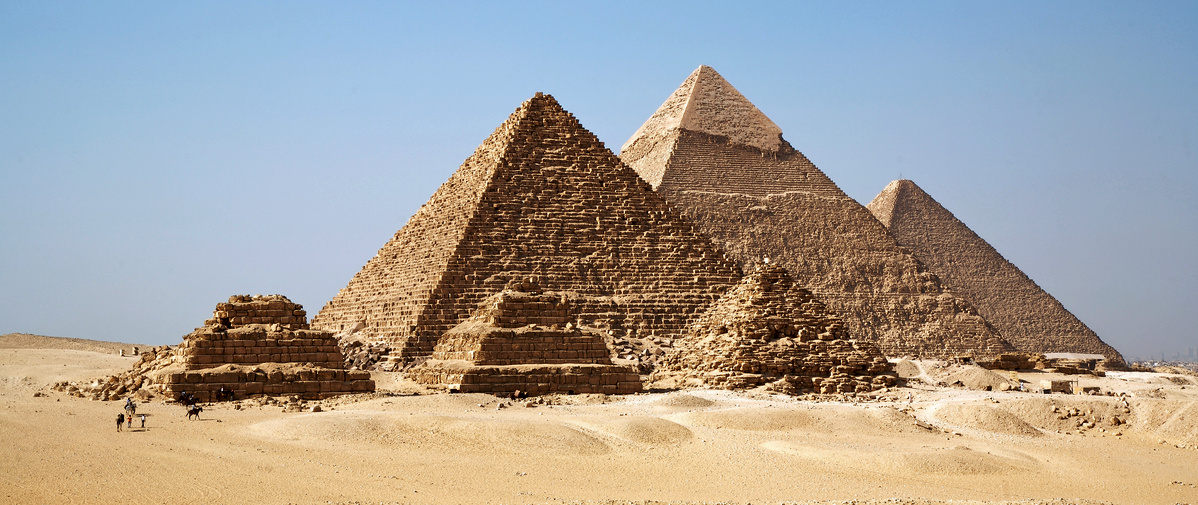
Humankind has had an intimate association with the Earth from the first tentative footsteps of those early hominids to our current insatiable need for minerals and fossil fuels. Undoubtedly our early ancestors were aware of geological deposits, whether they were a source of flint for hand tools or clay for cave paintings or body adornment. Once the origins of the science stretch way back into the early history of man. Adobe to build dwellings or the source of ochre for cave paintings may have been the first venture into sources of materials for the use of mankind. Later stone and clay would have become important as building materials or for brick making. Certainly the ancient Egyptians were using bricks in their less ambitious constructions. And to deny that there was no understanding of the local geology when it came to the quarrying of stone for the Egyptian pyramids would have been naive indeed.
Inconsiderately, doomsday did not arrive
Herodotus, 484 to 426 BC, made many significant geological observations, speculating about the effect of earthquakes on landscapes, but ascribed their causes to Poseidon. Pliny the Elder (AD 23 to 79) lost his life tramping around the slopes of Vesuvius during the eruption that destroyed Pompeii. His reasoning was that earthquakes were a result of Earth’s resentment against those that mutilated and plundered her for gain.
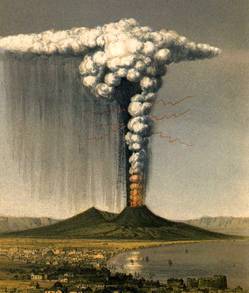
Plinian Eruption of Vesuvius
Christianity put scientific enquiry literally into the dark ages due to an all encompassing theory for the cause of everything, and besides it was thought that the Earth was a very young place, doomsday was nigh, and therefore the study of the machinations of the planet would be a pointless exercise. Inconsiderately doomsday did not arrive which got some individuals wondering about the natural world. In addition the increasing preoccupation during the Middle Ages with alchemy kick-started a scientific process which continues to this day. Leonardo da Vinci, Nicholas Copernicus, Galileo Galilei, brave and brilliant philosophers and scientists all, drove some of the first nails into the coffin of ignorance, holding high the light of knowledge for those who would but open their eyes to see.
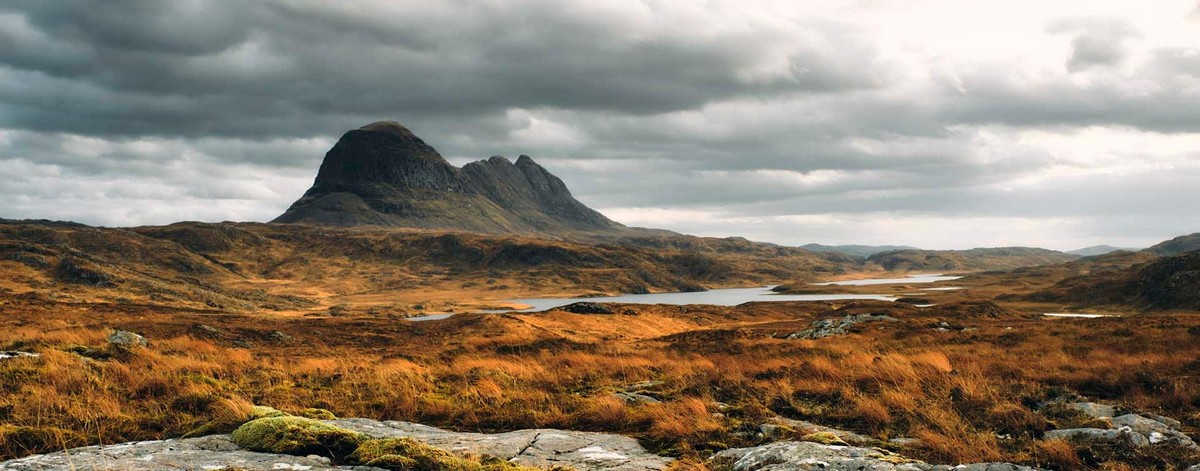
However the first real attempt on a treatise on geology was made by Scottish farmer James Hutton in an inaccessible 1795 tome titled ‘A Theory of the Earth with Proofs and Illustrations.’ He might have passed into geological obscurity if it wasn’t for a certain John Playfair who rewrote the book on Hutton’s death, making it possible for mere mortals to grasp the concepts that Hutton had so obscurely written about. At that time natural philosophers were divided into two camps – the Neptunists, who believed that everything on Earth, including sea shells on lofty peaks, were due to rising and falling sea levels, and the Plutonists, who noted that volcanoes and earthquakes continually changed the face of the planet and that seas were not the agents which the Neptunists believed. Plutonists also raised difficult questions such to the whereabouts of all the water during periods of tranquillity, a period we are experiencing now.
Making it possible for mere mortals to grasp the concepts that he had written about
Hutton’s insights threw some light on the matter, thanks to his keen eye and a close identification with the land thanks to his farming background. He observed the formation of soils, and their erosion and transport to other locales. He realised that over time this erosion of the high ground and the infilling of the lows would leave a planet smooth and devoid of topography. However everywhere he looked there were hills and mountains, particularly so in his native Scotland. He concluded that there had to be some process that renewed and uplifted the landscape the keep the cycle going. Those pesky fossils on the mountain tops had not been deposited by floods, but had been lifted there, along with the mountains themselves. Heat within the Earth was the driving force of all this activity, or so ran the thoughts of Mr Hutton.
Interestingly some of these thoughts have only been vindicated in the last 50 years or so. More importantly however was the idea that these processes required immense periods of time – far more than anyone had as yet ever conceived.
His work was discounted and ridiculed by supercilious aristocrats
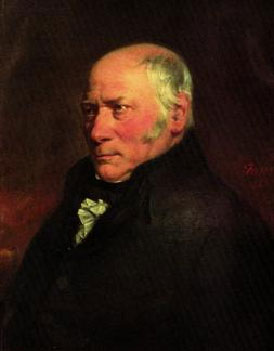
At the same time, down south, William Smith was building canals and draining bogs for a range of clients as part of the expanding infrastructure driven by the Industrial Revolution. During his daily work he uncovered a myriad of fossils, and realised that each succeeding geological bed or formation had its own particular assemblage of preserved organisms.
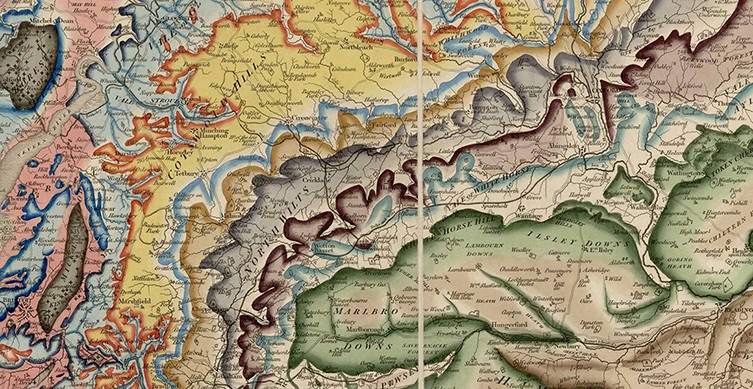
Spending huge amounts of time and his own money, he travelled widely across vast swathes of England and to some extent Scotland, mapping the various outcrops of the various strata wherever he went. His exertions damaged his health had his finances to the extent that he even spent time in a debtors gaol, and perhaps even more galling for him, his work was discounted and ridiculed by the supercilious aristocrats who had formed the Geological Society of London in 1807.
However an examination of the map that Smith produced and which now hangs in the Society’s headquarters in London reveals his genius. His map shows in amazingly accurate detail the geology of the British Isles and was the first ever geological map. Single-handedly Smith had mapped out what the British Geological Survey, with hordes of geologists and government funding, couldn’t really improve on except by adding detail. And in a true Hollywood ending, Smith was eventually accepted and then lauded by the Society, and was granted a pension in his latter years, putting off forever the spectre of a debtor's prison and a difficult retirement.
Charles Lyell then enters the stage. He had managed to wade through chunks of Hutton’s book, and was eternally grateful to Playfair for rewriting the work into something approaching readable. Lyell was the most influential geologist of his century, which was a time incidentally when the world was in thrall to all things geological. Geology was the central science and the older Royal Society was in danger of being eclipsed by the upstart Geological Society as the premier scientific society of the country, which at that time also meant the world.

Charles Darwin carried a copy of his book on the Beagle voyage
So popular was the science that when Charles Lyell travelled to America to lecture, 3000 people showed up to be enlightened on ponderous subjects such as marine zeolites and seismic perturbations in Campania. Back home, modern, thinking men would venture forth to do fieldwork dressed in top hats and dark suits, except for a Reverend Buckland of Oxford who preferred an academic gown. Lyell produced his masterpiece, The Principles of Geology, which built on the works of Hutton of a previous century and made his reputation. Charles Darwin carried a copy of his book on the Beagle voyage, writing afterwards “the greatest merit of the Principles was that it altered the whole tone of one’s mind, and therefore that, when seeing a thing never seen by Lyell, one yet saw it partially through his eyes.”
Rude Catastrophist brickbats still whizz down the passage of 2 centuries
Between the time of Hutton and Lyell there arose another controversy that followed on from the great Neptunist-Plutonist debate. New lines were drawn between the Catastrophism and Uniformitarianism camps. The former adhered to the idea that the Earth was shaped by cataclysmic events – floods, mainly, while the latter camp believed that changes on Earth took place over immense periods of time.
The Catastrophists found that their theory worked in well with the Noachian deluge and therefore did not fly in the face of any biblical beliefs. Lyell was a Uniformitarian and his influence echoes down to the present day. As an interesting aside however, rude Catastrophist brickbats still whizz down the passage of 2 centuries to strike at the very heart of Uniformitarian belief. These brickbats comprise meteorite impacts which are widely believed to have brought to a close the Cretaceous Period and the demise of the dinosaurs, and have been invoked as the cause of a number of other extinctions in Earth history.
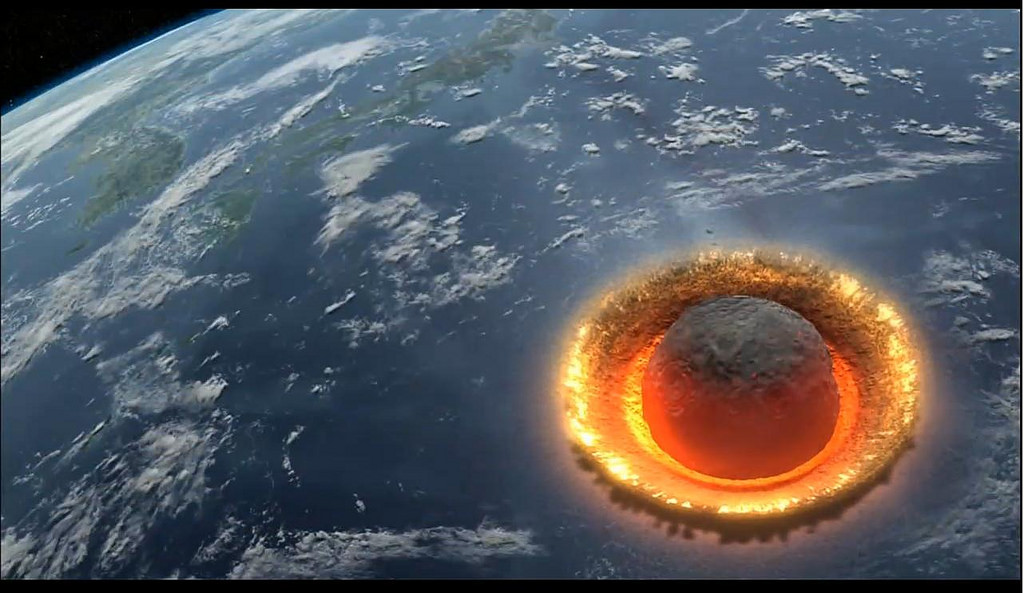
Because the Brits were the most active in the early years of the science, British names were assigned to the geological time scale. The Devonian Period is named after Devon, the Cambrian after the Roman name for Wales, and the Ordovician and Silurian after ancient Welsh tribes, the Ordovices and the Silures. However other names began to creep in from practitioners elsewhere – Jurassic from the Jura Mountains of southern France, Permian from the Russian province of Perm while the Cretaceous was named by a Belgian with the wonderfully theatrical name of J.J. d’Omalius d’ Halloy.
Camels Often Sit Down Carefully Perhaps Their Joints Creak
Initially the geological time scale was divided into 4 spans – Primary, Secondary, Tertiary and Quaternary. The Tertiary is the last surviving member of this initial subdivision, although Quaternary does get a periodic outing. Lyell introduced additional units known as epochs or series to cover the period since the end of the Cretaceous. These were the Pleistocene, meaning ‘most recent’ Pliocene, the ‘more recent’, Miocene, ‘moderately recent’ and Oligocene ‘but a little recent.’
Nowadays geological time is divided into four great chunks known as eras – Precambrian, Palaeozoic, Mesozoic and Cainozoic, which in turn are divided into Periods which some of you may be familiar with, viz., Cambrian, Ordovician, Silurian, Devonian, Carboniferous, Permian, Triassic, Jurassic, and Cretaceous. (Camels Often Sit Down Carefully Perhaps Their Joints Creak is a useful acronym for remembering them).
Read Episode 2
A Note and an Invitation
Rock and Sky is all about physical geography, with a leaning towards geology. We bring real world examples and real world stories to assist you in your teaching. We are having fun, but it is a team effort, so please stick around, read our blog posts, leave your comments and watch us grow as we create more and more content for you.
Please share with colleagues, friends and students, and of course on Facebook, Twitter, Pinterest and LinkedIn.
Become a GeoRocker and join the Rock and Sky Facebook Group for fun and community.


A good read. Can’t wait for Episode 2.